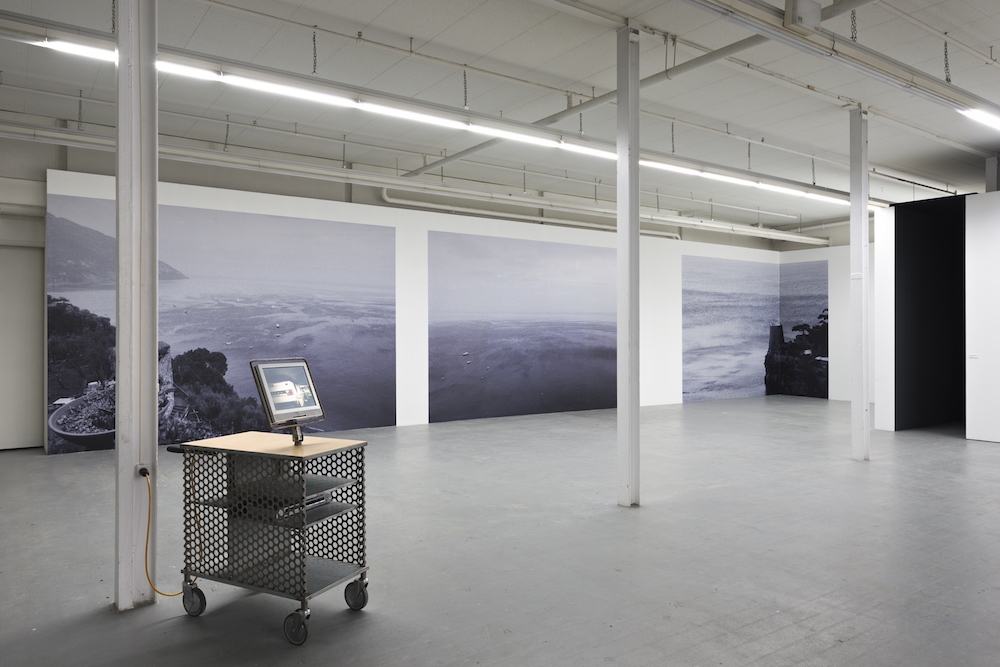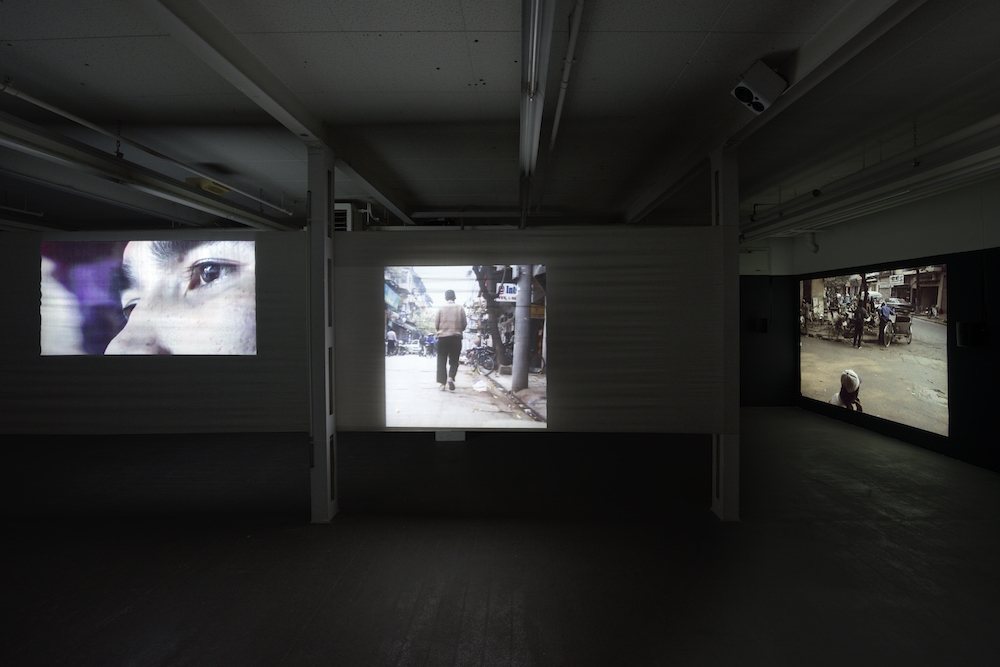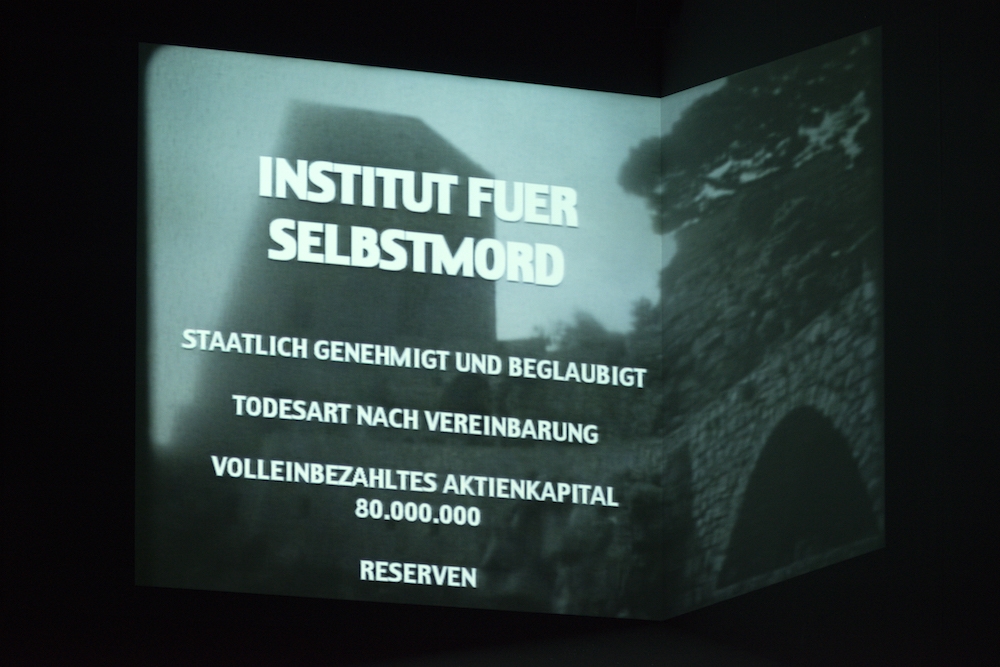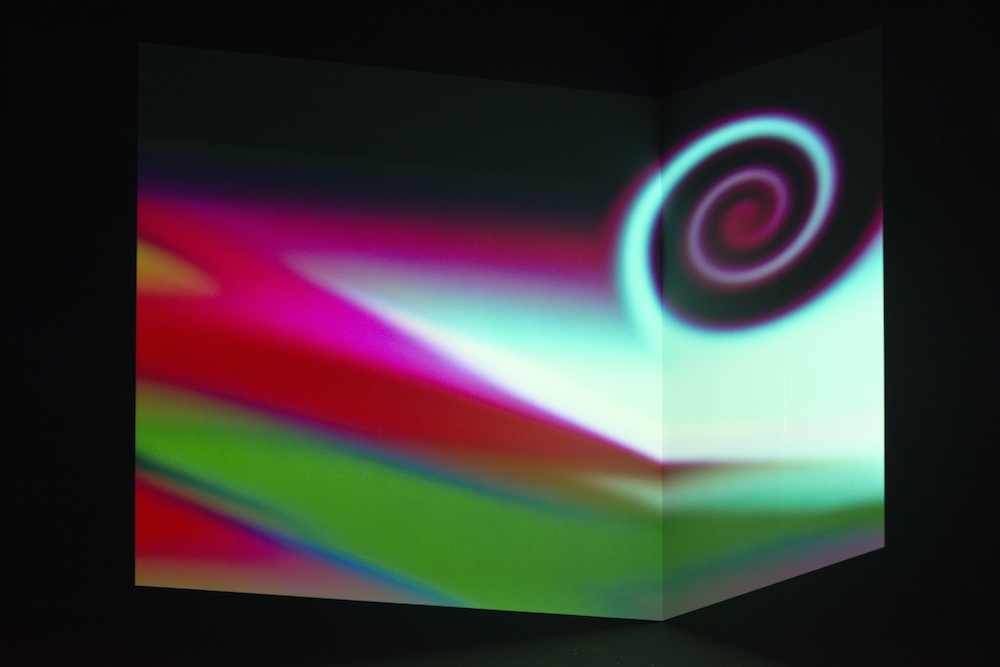Renatus Zürcher
Achterstrom
2.2. —
31.3.2013





Comprehensive solo exhibition of the Basel based artist Renatus Zürcher.
The writer and artist Gilbert Clavel (1883—1927), who comes from the well-known silk dyer family Clavel-Merian, can certainly be described as a personality who is able to cast a spell. Clavel grew up in Basel and suffered from severe scoliosis as a result of tuberculosis and an accident in childhood. After studying art history, philosophy and Egyptology, he made long trips to southern Europe and North Africa. During the First World War he met, inter alia, the Futurist painter Fortunato Depero, with whom he briefly had an intense friendship.
Among the futurists, Gilbert Clavel considered himself as provider of ideas and part of a social reform movement. He wrote essays on art theory and a novel Un Istituto per Suicidi (An institute for suicides) in 1918, in which the first person narrator describes various types of suicide: besides the intoxicating drink and the lust, the opium preparation pantopon is cited as an effective means. The union of all three types of death is considered a fourth way of suicide. From 1918 he devoted himself exclusively to the conversion of a former watchtower on the Amalfi coast in Positano. The tower, which Clavel had acquired many years earlier, had long been in ruins and only direct action on the rocks enabled an extension and continued construction. Clavel proceeded with divining rod and compass to create underground corridors and a grotto. The rock became a sculptural body, which he seized with explosives. Clavel’s theoretical, literary and architectural achievements can be regarded as an idea base of complete art creation, whose impact reverberates to this day.
It is not surprising that the artist Renatus Zürcher (born 1957 in Baar, lives and works in Basel) takes up the life and works of Gilbert Clavel and creates with his own artistic means a picture based on the present directed towards the past. Zürcher, whose work method usually puts people at the centre, often chooses for his projects exceptional individual personalities and their activities and works. He dedicated one of his last major projects, for instance, to the Swiss anthropologist Paul Wirz, whose methodology and theoretical considerations Zürcher recorded in the form of a documentary film and a book project. For the Boulevard project of 1995, however, by which Renatus Zürcher became known, the artist incorporated all the residents of Mülhauserstrasse in Basel, where he himself lived for a time. After he conveyed to the residents of this street the basic idea of a transgression of private and public space in an empty office building, the Mülhauserstrasse became a public television and video street for a short while. Renatus Zürcher, who before his artistic education at the Basel School of Design was also active in the occupational therapy field, lately resorts to his multidisciplinary experience in his examination of Gilbert Clavel.
The film installation An Institute of Suicide (2012), which directly refers to the eponymous novella by Clavel, and the space installation 3 Views (2012) were created for the exhibition at Kunsthaus Baselland. The presentation is complemented by older works such as the room installation Tour: 16/221 (2004) and Positano Peak (2007). Apart from direct references to Clavel in the individual works, the exhibition is generally characterised by an atmospheric juxtaposition with Clavel’s world of thought, which manifests in individual spatial and visual experiences. The stairway to the exhibition in the basement of the Kunsthaus Baselland already recalls the descent into the hallways, corridors and the grotto in Torre Clavel, as the tower in Positano is called, among others. Visitors are welcomed by a photograph showing the Bay of Positano with the tower, in which “the waves and the air — in the Clavelian sense — were brought to a standstill” (R. Zürcher). The film An institute for suicide with his four approximately eight-minute sections can be compared with a visually implemented dream story. As described in the opening quote, it runs backwards and is reminiscent of a film running in reverse, which in turn reflects certain states or events. Each of the separate film sections is devoted to one of the three types of suicide described by Clavel, the fourth combines all three into a single one. For Gilbert Clavel, death is not the termination of life, but rather a passage that leads to a metamorphotic transformation. The bird flying away is the symbol of this transformation. The grotto in the film is empty at the end. The narrator, the actor, the human being (Clavel?) is gone, passed away to a next metamorphotic existence?
The installation 3 Views again refers to three kinds of life, which are contrasted with the types of death. These are expressed through video works featuring various models of movement — driving, walking and sitting. The subject of movement is also the focus of the work in Tour 16/221. The soundless video shows a cyclist whose perfect lap was the 16th. This perfect lap, cut 221 times one after the other, after prolonged viewing visualises something like a disembodied state, which in its trance-like quality is reminiscent of Clavel’s dream story portrayal. The seemingly infinite loop could be read as a symbol of the infinite metamorphosis: one perfect physical condition after another, coupled with transformations on a spiritual level? Positano Peak too can be read as a kind of symbol for the drifting away. The upside-down pictures describe a tourist snapshot of Positano, where huge buses take tourists and disgorge them again. In the state shown upside down, a real moment becomes an abstract one, which can only be traced to a basic emotionality. Here, too, a Clavelian moment opens, which could become manifest in one of his key sentences, “Life is a dream in the circle of time”.
Text by Sabine Schaschl